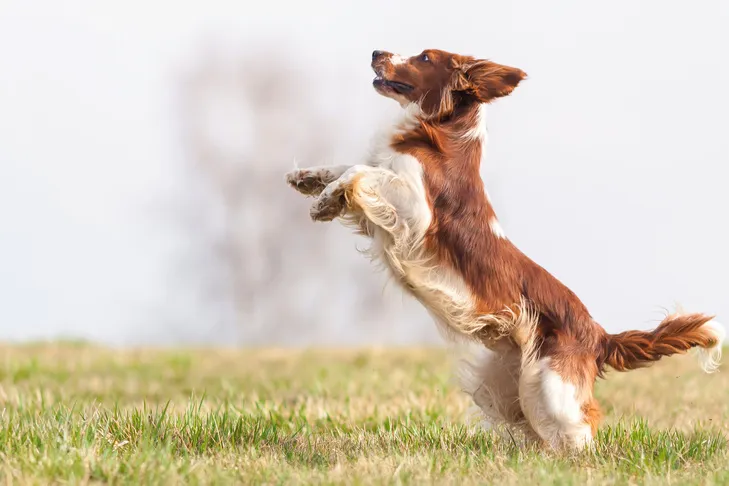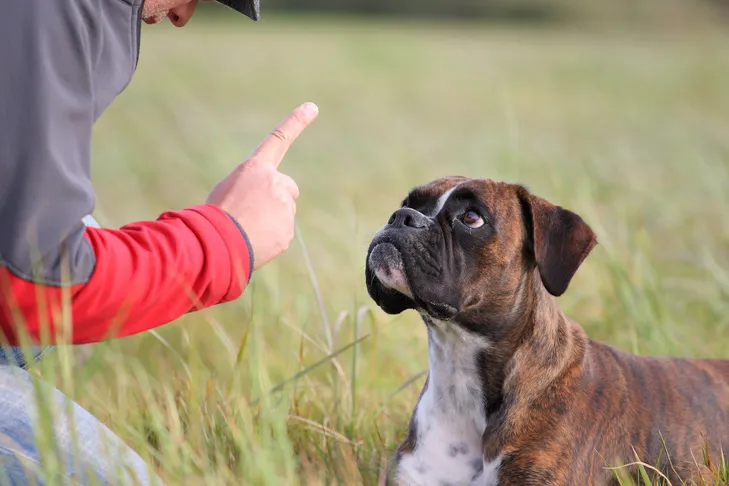Puppies often express their excitement by jumping up on people, a behavior that, while sometimes endearing, can quickly become problematic. This common puppy behavior can lead to scratches, muddy paw prints, or even knock someone over, especially children or seniors. At its heart, your puppy is usually just trying to get closer to your face to say “hello” or seeking attention. Since jumping is an effective way for puppies to gain your notice, understanding how to redirect this natural canine inclination is key to polite greetings.
Instead of just telling your puppy what not to do, the most effective approach is to teach them an alternative, appropriate greeting rule. This could be keeping all four paws on the floor, sitting, or lying down for attention. By establishing clear rules and consistently reinforcing them, you can help your puppy learn exactly how to greet people appropriately and earn the attention they crave. Here are 10 essential tips to guide you on how to teach your puppy to stop jumping.
1. Only Greet Your Puppy When Their Paws Are on the Floor
The foundation of stopping unwanted jumping behavior is teaching your puppy an incompatible alternative. This means your puppy cannot jump and perform the desired behavior simultaneously. For instance, if your rule is “four paws on the floor,” your puppy can’t jump while standing. Alternatively, you might prefer them to sit or lie down during greetings. Whatever rule you choose, be consistent: only provide attention and greet your puppy when they are following this rule. Avoid sending mixed signals, such as allowing jumping when you’re casually dressed but not in formal attire. Consistency is paramount for your puppy to understand the expectation.
2. Reward Immediate Attention for Four Paws on the Floor
Puppies, like all dogs, are more likely to repeat behaviors that earn them a desired outcome. Your attention is a highly valuable reward for your puppy. Therefore, as soon as your puppy’s front feet touch the floor (or they sit/lie down, depending on your rule), immediately offer praise and gentle petting. Do not delay your greeting while you take off your coat or shoes; your puppy might become impatient and try other tactics to get your attention, including jumping. Quick, positive reinforcement helps your puppy connect their desired behavior directly with receiving your attention.
3. Remove Attention When Your Puppy Jumps
Conversely, to eliminate jumping, you must stop reinforcing it. Never reward a behavior you wish to stop. If your puppy jumps on you, immediately withdraw your attention. This can be as simple as turning your back or calmly walking away. This teaches your puppy that jumping has the opposite effect of what they intended. The moment your puppy has all four paws back on the floor, turn back and quietly praise and pet them. This consistent on-off switch for attention based on their behavior will clearly communicate your greeting rules.
 Welsh Springer Spaniel puppy enthusiastically jumping up on an adult outdoors.
Welsh Springer Spaniel puppy enthusiastically jumping up on an adult outdoors.
4. Set Your Puppy Up for Success with Structured Greetings
While ignoring jumping and rewarding proper greetings is effective, it can be frustrating for your puppy as it involves trial-and-error learning. To accelerate the process and build your puppy’s confidence, proactively set them up for success. If your greeting rule is “sit,” ask them to sit as soon as you enter. If it’s “four on the floor,” encourage them to stand calmly. A fantastic trick to prevent jumping is to scatter small treats on the floor. Most puppies can’t resist a free snack, and they can’t jump while sniffing and eating off the ground. Be quick with the treats, offering them before your puppy even considers jumping, to reward calm, four-on-the-floor behavior with both attention and food. Over time, your puppy will grasp the rule, and you can gradually reduce the food rewards. A well-trained puppy will eventually understand how to get a puppy to stay in a calm position during greetings.
5. Consistently Reward Proper Greeting Behavior
For your puppy to learn quickly and effectively, their actions must have an immediate and consistent impact on your attention. Four paws on the floor equals attention; jumping equals no attention. It is crucial to always reward your puppy when they follow your greeting rule. Even if you’re feeling a bit frustrated after a long period of jumping, never withhold attention once their feet are on the ground. Inconsistent reinforcement will confuse your puppy and slow down their learning process. Always reinforce the desired behavior, no matter your mood.
6. Avoid Physical Contact Like Grabbing or Pushing Your Puppy Away
Remember, your puppy jumps to gain your attention. Any form of physical interaction, such as grabbing their paws, holding them down, or pushing them away, is still a form of attention. This negative attention can inadvertently reinforce the jumping behavior, leading to more frequent and persistent jumping in the long run. Worse still, many playful puppies might misinterpret such physical responses as an invitation to roughhouse play. They may return to jump harder, thinking it’s all part of an exciting game. It’s important to understand how to train dog to not jump on people effectively without resorting to counterproductive physical methods.
 American Hairless Terrier puppy playfully jumping up on its owner's leg outdoors.
American Hairless Terrier puppy playfully jumping up on its owner's leg outdoors.
7. Do Not Use the “Knee Up” Method
You might have heard the old advice to put your knee up to block your puppy’s chest when they jump. However, similar to grabbing or pushing, this can be perceived as attention or a rough game by some puppies, potentially increasing the behavior. More significantly, for most puppies, this action can create distrust and erode the precious human-canine bond. Your puppy is simply trying to greet you, and responding with a physical block can feel like punishment, possibly causing injury. A breakdown in trust can lead to other behavioral challenges.
8. Keep Greetings Low-Key While Your Puppy is Learning
A puppy’s excitement upon seeing you can be overwhelming, making it difficult for them to control the natural urge to jump. It requires significant emotional self-control to resist this impulse and follow a new greeting rule. Help your puppy by keeping your own greetings low-key, especially during the learning phase. Puppies are adept at reading our emotions; if you are overly excited, they will mirror that energy. Instead, maintain a calm and quiet demeanor, even when praising. As your puppy becomes more proficient, you can gradually increase your enthusiasm until you can match theirs without triggering jumping. Learning good habits, like how to train your dog to pee on pad or how to sleep through the night, are all part of establishing a calm and controlled environment.
9. Prevent Your Puppy From Jumping on Guests
Your household members are not the only ones who can inadvertently reinforce your puppy’s jumping behavior. Guests, and even strangers encountered outside, can also reward jumping if you are not proactive. To prevent this, use management techniques such as keeping your puppy on a leash to control their approach. Even better, teach your puppy to “go to their place,” such as a mat or bed, or place them in their crate when guests arrive, ensuring they are not near the door. Using a baby gate can also effectively block the front hall and create a barrier. Consistent management is crucial to avoid setbacks.
10. Ask Guests and Strangers to Follow Your Greeting Rules
Don’t hesitate to clearly communicate your puppy’s greeting rules to guests and even polite strangers. While your puppy is still in training, ask people to completely ignore your puppy unless you explicitly give permission. It’s often beneficial to avoid encounters with strangers until your puppy has mastered polite greetings with familiar friends and family who will reliably cooperate with your training methods. When out and about, use a “watch me” cue or distract your puppy with a hand touch game or a favorite toy until the stranger has passed. These strategies help manage your puppy’s focus and prevent unwanted jumping.
 A serene Boxer puppy laying down outdoors, observing its owner during a training session.
A serene Boxer puppy laying down outdoors, observing its owner during a training session.
Stopping a puppy from jumping up requires patience, consistency, and clear communication. By implementing these 10 tips, focusing on positive reinforcement, and avoiding actions that inadvertently reward jumping, you can successfully teach your puppy polite greeting manners. This not only enhances your puppy’s behavior but also strengthens the bond between you, ensuring a happier and safer environment for everyone. If you’re looking for more comprehensive advice on puppy training, exploring resources on how to help puppy sleep at night or other common challenges can further support your journey.
